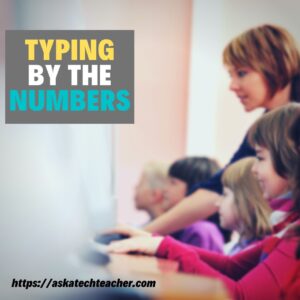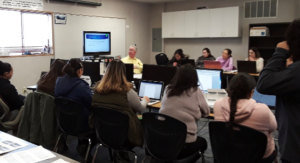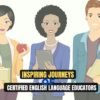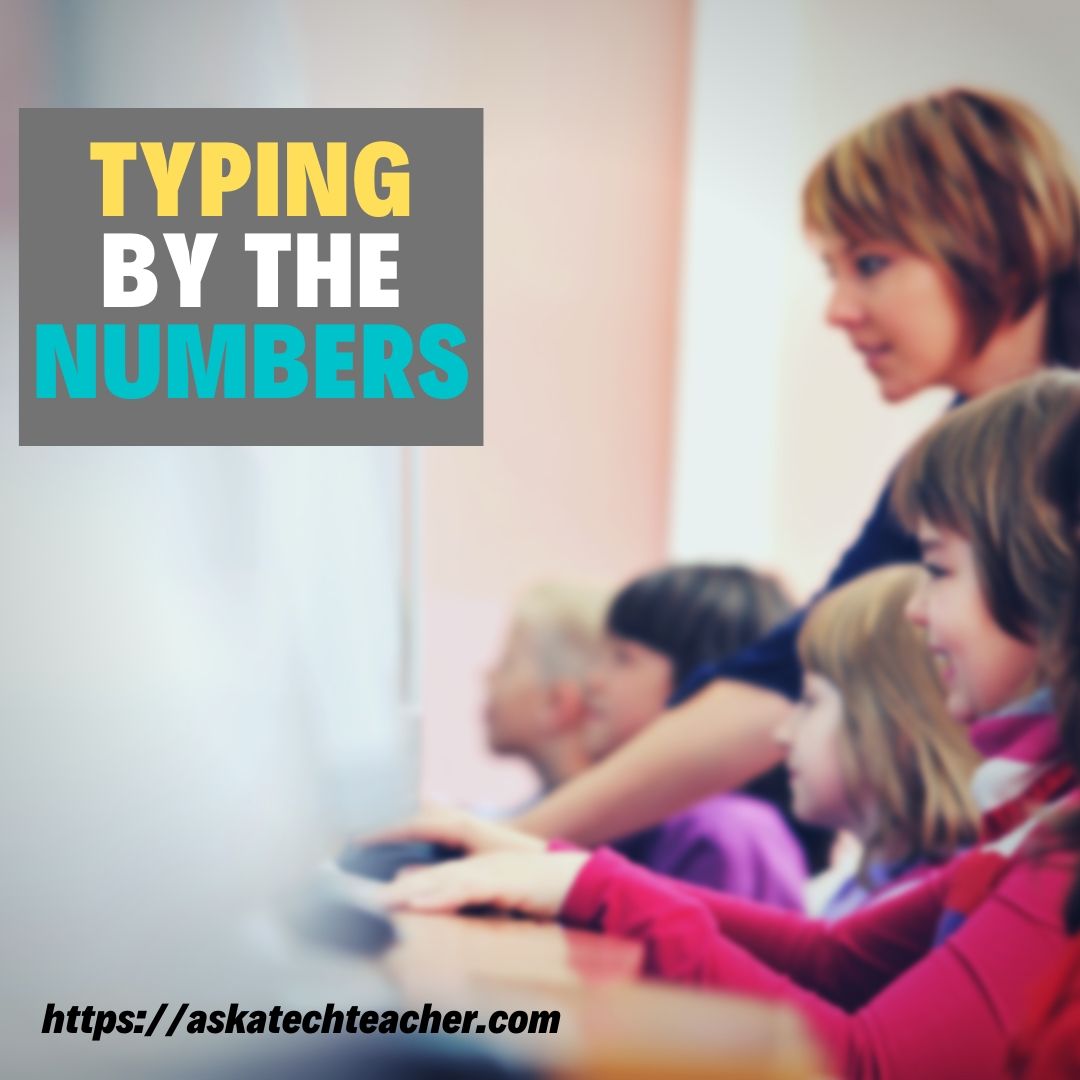Jacqui Murray has been teaching K-18 technology for 30 years. She is the editor/author of over a hundred tech ed resources including a K-12 technology curriculum, K-8 keyboard curriculum, K-8 Digital Citizenship curriculum. She is an adjunct professor in tech ed, Master Teacher, webmaster for four blogs, an Amazon Vine Voice, CSTA presentation reviewer, freelance journalist on tech ed topics, and author of the tech thrillers, To Hunt a Sub and Twenty-four Days. You can find her resources at Structured Learning.
Tag: ell
Inspiring Journeys of Certified English Language Educators
Inspiring Journeys of Certified English Language Educators
The recent changes in the working environment and the ongoing global economic crisis have brought about significant shifts in people’s lifestyles. These changes have influenced personal habits, from shopping preferences to social norms, and have also impacted how individuals view their professional lives, with many now valuing flexibility over stability.
As individuals have come to realize that external events can disrupt their life plans unexpectedly, they are increasingly willing to leave behind what was once considered safe and secure to chase their long-held dreams, however unconventional they may appear. Often, these dreams involve the mystery and excitement that international travel evokes.
The Attraction of Overseas Adventures
What makes the idea of travelling abroad so enticing? Naturally, everyone has a unique response to this question. travelling provides the opportunity to explore other cultures, witness the beauty of different countries, and, simultaneously, learn more about oneself.
Undoubtedly, living and travelling in a foreign land pushes you out of your comfort zone. Can you adapt to a place where you don’t speak the local language? How do you respond to unforeseen challenges? Are you able to start anew and form connections in a foreign setting? Travelling fosters new skills and puts your resilience and resourcefulness to the test.
Relocating to another country requires careful planning and financial awareness. Embarking on a journey abroad to teach English as a foreign language (TEFL) is an option that promises an exciting lifestyle where every day offers something new. It equips you with the means to sustain your daily life as well as your adventures abroad.
The Fulfillment of Teaching Overseas
Teaching is a profoundly rewarding profession – what you teach can directly impact the lives of others. For many people worldwide, learning English represents a step closer to financial stability, job prospects, and an improved quality of life. As a teacher, you’ll encounter countless fascinating individuals who are eager to teach you about their culture and country in return.
To become an English teacher abroad, it’s important to understand that the prerequisites for this career differ from one country to another. Some nations mandate a university degree and/or citizenship from specific English-speaking countries. Others may have age restrictions, while some are more flexible.
One thing remains certain: completing a 120-hour TEFL course not only opens doors to your dream job but also equips you with the confidence and knowledge needed to commence your teaching journey successfully. Numerous training options are available, but an accredited TEFL certification covers various areas, including language awareness (grammar, vocabulary, pronunciation), teaching skills (reading, listening, speaking, writing), methodology (PPP, TTT, Dogme, TBL), and learner assessment.
Regarding teaching opportunities, there is a wide array to choose from, depending on your qualifications, previous teaching experience, and personal preferences, from public schools to universities.
However, most newly certified TEFL teachers start their journey working for language schools or academies. These are private institutions offering language courses for various age groups and proficiency levels, with hiring typically ongoing throughout the year.
The experience of teaching in a private language school varies considerably depending on the country you are in and on the company itself. Like in any field, there are great employers while others are less than ideal. However, many teachers can confirm that the environment in an academy is usually conducive to learning and professional development, supporting teaching staff with a strong professional learning network.
A journey to the centre of ELT
What’s it really like to teach English abroad? Find out from the horse’s mouth and take a look at Monica’s teaching journey below.
Monica is originally from Italy but has lived in the UK for two decades. She started as a TEFL teacher in 2010 but then progressed to teacher training. More recently, Monica has decided to focus on materials and item writing, showing that there’s huge variety and plenty of opportunity in the ELT world. Here’s Monica’s story:
“My journey in the field of English Language Teaching began in December 2009 when I completed my Cert.Tesol course in London. Shortly after, I ventured to Prague, Czech Republic, for my first teaching position. From there, I continued to teach in Bergamo, Italy, and later in London and Cambridge, UK, where I pursued and successfully completed my DELTA course.
“Over nearly a decade, I taught a diverse range of students, spanning various backgrounds, age groups (from young learners to adults), and proficiency levels (from beginners to advanced). I had the opportunity to teach in various settings, including one-on-one, monolingual, and multilingual classes. I also specialized in preparing students for IELTS and Cambridge exams, as well as teaching EAP (English for Academic Purposes) and BE (Business English) classes.
“While in London, I had the privilege of working with an outstanding tutor who guided me in becoming a Trinity Tesol teacher trainer. It was during this time that I developed a deep passion for creating teaching materials and content. As a Senior Teacher in both London and Cambridge, I had the honor of designing and delivering teacher training courses, CPDs, and webinars. This experience led me to dive into writing, and my notes and ideas evolved into published articles.
“I realised that I enjoyed writing – especially about teaching and learning the English language! – and a couple of fortuitous events opened the doors for me to become an ELT writer. Two friends, who both work in ELT but in completely different settings and don’t know each other, asked me to work on two separate assignments.
“Being someone who loves a challenge – or two, in this case! – I had to give both projects a go. As a teacher at the time, I was quite confident in using, adapting, and creating (some) teaching materials, using coursebooks or other published materials as a starting point. However, this was materials writing from scratch and it was a completely different story!
“It turned out that I enjoyed everything about it: from the variety of the work, as you get a different project each time, to the comfortable environment of working from home. I particularly love the fact that professional development is key in this area of ELT. From ways to better represent a broader range of individuals to systems that allow you to create interactive content, there’s always something new to learn for every project I take on.
“Nowadays, I don’t teach anywhere near as much as I used to. However, I feel that keeping in touch with the realities of a classroom, whether it be virtual or not, is the best way to create relevant and fresh content. So today, even though I focus on writing ELT materials and content, for a wide range of international and UK-based clients, I still do some online lessons, mainly ESP (English for Specific Purposes).”
Do you feel inspired?
Do you fancy seeing for yourself what a life as a TEFL teacher abroad could be like for you? Start your own TEFL journey by looking at what is TEFL article from The TEFL Org.
Here’s the sign-up link if the image above doesn’t work:
Jacqui Murray has been teaching K-18 technology for 30 years. She is the editor/author of over a hundred tech ed resources including a K-12 technology curriculum, K-8 keyboard curriculum, K-8 Digital Citizenship curriculum. She is an adjunct professor in tech ed, Master Teacher, webmaster for four blogs, an Amazon Vine Voice, CSTA presentation reviewer, freelance journalist on tech ed topics, contributor to NEA Today, and author of the tech thrillers, To Hunt a Sub and Twenty-four Days. You can find her resources at Structured Learning.
Share this:
- Click to share on Facebook (Opens in new window) Facebook
- Click to share on X (Opens in new window) X
- Click to share on LinkedIn (Opens in new window) LinkedIn
- Click to share on Pinterest (Opens in new window) Pinterest
- Click to share on Telegram (Opens in new window) Telegram
- Click to email a link to a friend (Opens in new window) Email
- More
9 Online Resources to Assist with ESL and ELL
Here’s a short list of good ESL and ELL resources. For updates, click here:
- Digital Storytelling for Language and Culture Learning (PDF) – National Writing Project
http://www.nwp.org/cs/public/download/nwp_file/12189/Judith_Rance-Roney_Digital_Storytelling.pdf?x-r=pcfile_d - L2 Digital Storytelling
- MCC ESL Digital Stories
- Teaching English – Digital Storytelling
http://www.teachingenglish.org.uk/blogs/özge-karaoğlu/digital-storytelling - Web English Teacher – Digital Storytelling
http://www.webenglishteacher.com/ds.html
ESL
- English Tools--digital tools to assist learning English as a second language
- Resource Guide for ESL
- SuperProf–private ESL online tutoring
- The TEFL Academy–course provider for those looking to teach English as a second language!
–image credit Deposit Photos
Share this:
- Click to share on Facebook (Opens in new window) Facebook
- Click to share on X (Opens in new window) X
- Click to share on LinkedIn (Opens in new window) LinkedIn
- Click to share on Pinterest (Opens in new window) Pinterest
- Click to share on Telegram (Opens in new window) Telegram
- Click to email a link to a friend (Opens in new window) Email
- More
How One Teacher Found Innovative Solutions to ELL Issues
 I met Dr. Bill Morgan through a shared interest in keyboarding for youngers (see this article on A Conversation About Keyboarding and this article on Preparing Young Students for Home Row Keyboarding: An Unplugged Approach). In each other, we found kindred spirits, both passionate about better ways to teach today’s learners.
I met Dr. Bill Morgan through a shared interest in keyboarding for youngers (see this article on A Conversation About Keyboarding and this article on Preparing Young Students for Home Row Keyboarding: An Unplugged Approach). In each other, we found kindred spirits, both passionate about better ways to teach today’s learners.
When Bill offered an article on a new class he started that helps English Language Learners, I was excited. It’s an important issue with not enough solutions. His approach is innovative, original, easy to implement (with some effort), and effective. Read on and see if this would work in your district. He’s included contact information so you can reach him with questions:
***
Computer Literacy for English Language Learners
“Typing by the Numbers”
Dr. Bill Morgan, Ph.D.
 Over the decades I have added both Educational Technology and TESOL (Teaching English as a Second Language) endorsements to my elementary teaching certificate. My graduate studies focused on integrating technology across the curriculum.
Over the decades I have added both Educational Technology and TESOL (Teaching English as a Second Language) endorsements to my elementary teaching certificate. My graduate studies focused on integrating technology across the curriculum.
Along the way I began volunteering with various organizations, working with immigrants from other countries. One evening a man from another culture asked me how to spell a specific word. As I spelled the word out loud we both realized that the sound I was using to name a vowel was not the same sound that he was familiar with. It must have been Spanish, where letter A “always says ah,” letter E “always says ay,” etc. When I used the letter A in the spelling of a word, he heard the letter E. When I used the letter E he heard the letter I. It was nearly impossible for him to take dictation from me.
He then asked me to write words for him to copy in his notebook. He laughed out loud and then said, “You write like a doctor!” I took that to mean that he could read my handwriting no better than that of a doctor who had given him handwritten notes to read.
From then on I brought my laptop computer to class. When an adult English learner asked me to spell a word I would type the word then enlarge the font that could be read by all in the room. I didn’t need a projector nor a large screen TV, I only needed a laptop sized monitor.
Thinking of how I might integrate technology with instruction, I gathered a group of bilingual community members and started, “Computer Literacy for English Language Learners, NFP.” Find us on Facebook!
Share this:
- Click to share on Facebook (Opens in new window) Facebook
- Click to share on X (Opens in new window) X
- Click to share on LinkedIn (Opens in new window) LinkedIn
- Click to share on Pinterest (Opens in new window) Pinterest
- Click to share on Telegram (Opens in new window) Telegram
- Click to email a link to a friend (Opens in new window) Email
- More
Dear Otto: I need reading resources for ELL/ESL
Dear Otto is an occasional column where I answer questions I get from readers about teaching tech. If you have a question, please complete the form below and I’ll answer it here. For your privacy, I use only first names.
Here’s a great question I got from Shelley:
Tomorrow is a half day planning day so I can’t wait to look at all of the websites you have for 1st grade. I’m wondering what recommendations can you give for ELL/ESL students? One of my student’s home language is Spanish and the other home language is Pashto. Thank you for any recommendations!
I found these websites that share story books in lots of languages:
Share this:
- Click to share on Facebook (Opens in new window) Facebook
- Click to share on X (Opens in new window) X
- Click to share on LinkedIn (Opens in new window) LinkedIn
- Click to share on Pinterest (Opens in new window) Pinterest
- Click to share on Telegram (Opens in new window) Telegram
- Click to email a link to a friend (Opens in new window) Email
- More







































